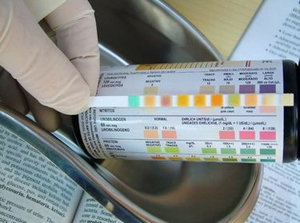University Hospital Zurich
Raemistrasse 100 Zurich, Zurich (Switzerland)
German Hospital Service
Destouchesstr. 1 Munchen, Bayern (Germany)
Moorfields Eye Hospital NHS Trust
162 City Road London, Greater London (UK)
Flinders Medical Centre
Flinders Drive, Bedford Park South Australia (Australia)
Urine Odor Signals UTI in Infants

Reviewed by Zalman S Agus MD Emeritus Professor Perelman School of Medicine at the University of Pennsylvania and Dorothy Caputo MA RN BCADM Nurse Planner
Badsmelling urine is a good predictor of urinary tract infection UTI in infants better than several other associated predictors researchers found
Though malodorous urine did not definitively rule in or out the diagnosis of UTI foulsmelling pee remained a statistically significant predictor of UTI after adjusting for gender and presence of vesicoureteral reflux OR 273 95 CI 146 to 508 according to Marie Gauthier MD of the SainteJustine University Hospital Center in Montreal Canada and colleagues
Additionally patients with malodorous urine who also presented with fever of unknown origin better predicted a UTI the authors reported in the May issue of Pediatrics
Previous studies assessing the value of malodorous urine in diagnosing UTIs in children have had contradictory results the authors noted in their introduction
In this study the researchers measured presence or absence of foulsmelling urine against presence or absence of UTI as well as other related UTI symptoms in 331 patients age 1 to 36 months who presented at the authors hospital emergency department
Researchers gathered data through a parental questionnaire that asked about the infants past medical history symptoms shown within 48 hours of emergency department visit and parental identification of malodorous urine defined as urine that smelled stronger andor more offensive Other data including information on why the urine culture was performed as well as culture results were obtained through medical record review
Of the 331 patients 51 15 met the UTI diagnosis criteria Foulsmelling urine was the risk factor most strongly associated with UTI with 57 of those with a UTI also having reported foulsmelling urine unadjusted OR 283 95 CI 154 to 520
However 32 of patients without a UTI also were reported as having malodorous urine
All patients with a UTI also had fever of unknown origin as did 92 of those without a UTI
Other risk factors for UTI included female sex OR 282 95 CI 141 to 561 and presence of vesicoureteral reflux OR 239 95 CI 104 to 553 Age and past history of UTI were not significant predictors of UTI
Researchers noted that although the association was strongest between urine odor and UTI more than 40 of patients with a UTI did not have badsmelling urine and more than 30 of patients without a UTI did have badsmelling urine
Although parental reporting of malodorous urine increased the probability of UTI in particular in children with fever without a symptom it did not have a sufficiently high specificity or sensitivity to definitely rule in or rule out a UTI Gauthier and colleagues wrote
The authors also noted a number of limitations with their study including no standardized definition of malodorous urine lack of direct observation of malodorous urine lack of evaluation in patients without fever or only presenting foulsmelling urine confounds in parental reporting and low number of patients with a UTI
Date : 04 Apr, 2012
Reference : http://www.medpagetoday.com/Pediatrics/GeneralPediatrics/31966
